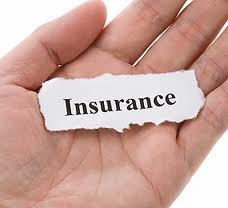Classification of Insurance:
Insurance companies are generally classified as either mutual, or stock companies, but this is a traditional distinction as true mutual companies are becoming very rare. Mutual companies are owned by their policyholders, while share- / stockholders (who may or may not own policies) own stock insurance companies.
Broadly speaking, insurance carriers may be classified as:
Life insurance companies, which sell life insurance, annuities and pensions products. Life, annuity, and pension business is very long-term in nature — coverage for life assurance or a pension can cover risks over many decades, and explains why this type of insurance is also called “long term insurance”.
Non-life (or ‘general’) insurance companies that sell “other” types of insurance. By contrast to life insurers, non-life insurance cover usually covers a shorter period – such as one year – which is why this type of insurance is also called “short term insurance”.
General insurance companies can be subdivided into:
Standard lines / personal lines insurers that are typically “main stream” lines insurers that specialize in motor, home or commercial insurance that may even be made available directly to the public , or
Excess lines insurers that typically insure risks not covered by the standard lines market. They are broadly referred as being all insurance placed with non-admitted insurers. Non-admitted (USA) insurers are not licensed in the states where the risks are located. These companies have more flexibility and can react faster than standard insurance companies because they are not subject to the same regulations.
Annuities provide a ‘stream of payments’ and are generally classified as insurance because they are issued by insurance companies, regulated as insurance and require the same kinds of actuarial and investment management expertise that life insurance requires. Annuities and pensions that pay a benefit for life are sometimes regarded as insurance against the possibility that a retiree will outlive his or her financial resources. In that sense, they are the complement of life insurance and, from an underwriting perspective, are the mirror image of life insurance.
Aviation insurance insures against hull, spares, deductible, hull war and liability risks. Aviation insurance distinguishes between commercial and non-commercial craft.
Boiler insurance (also known as equipment breakdown insurance) insures against accidental physical damage to equipment or machinery.
Builder’s risk insurance insures against the risk of physical loss or damage to property during construction. Builder’s risk insurance is typically written on an “all risk” basis covering damage due to any cause (including the negligence of the insured) not expressly excluded from the policy.
Casualty insurance insures against accidents, not necessarily tied to any specific property.
Commercial insurance is based on the needs of businesses. These policies can be adjusted according to a business’ unique requirements, i.e. in respect of it’s general contents risk, theft of stock risk, electronic equipment, documents (such as handbooks, manuals, computer discs, books, etc.), specialised equipment risk, loss of income caused by damage to buildings or equipment. Forms of commercial insurance are constituted by specialized policies in respect of Plant All-Risk and Engineering Works (amongst others). In South Africa there is a common basis of commercial insurance contract wordings, referred to as Multimark3 / Multimark III policies. Although it is (was) an industry agreed wording since 1987, many insurers have (over time) amended the MMIII wording for themselves, and such policies deviate from the original wording, despite still being referred to – within the industry – as Multimark III policies.
Credit insurance repays some – or all – of a loan back when certain things happen to the borrower, such as unemployment, disability or death. Mortgage insurance is in fact a form of credit insurance, but credit insurance really refers to policies that cover other kinds of debt.
Crime insurance insures the insured against losses arising from the criminal acts of third parties. For example, a company can obtain crime insurance to cover losses arising from theft or embezzlement.
Crop insurance reduces / manages various risks associated with growing crops and are typically found in farming policies. Such risks include crop loss or damage caused by weather, hail, drought, frost damage, insects, or disease.
Directors and officers liability insurance protects an organization from costs associated with litigation resulting from mistakes by directors and / or officers, for which the organisation is liable. In the industry, it is usually called “D&O insurance” for short.
Disability insurance provides financial support in the event the insured is unable to work because of a disabling illness or injury.
Environmental liability insurance protects the insured from bodily injury, property damage and cleanup costs as a result of the dispersal, release or escape of pollutants. See “Pollution Insurance”.
Errors and omissions insurance: See Professional indemnity insurance.
Expatriate insurance provides individuals and organizations operating outside of their home country with protection for automobiles, property, health, liability and business pursuits.
Financial loss insurance protects individuals and companies against various financial risks, such as a business might purchase cover to protect it from loss of sales if a fire in a factory prevented it from carrying out its business for a period. This is frequently referred to as “business interruption insurance”. however, insurance might also cover the failure of a 3rd party creditor to pay money it owes to the insured.
Fidelity- and surety bonds (also court bonds) are often included as a type of financial loss insurance. These products – often a 3 party relationship – provide a benefit to the bond holder in the event the “insured” party fails to perform its obligations. (Although a surety bond resembles insurance, it can be argued that it is in most occasions not insurance, but in fact sui generis. Similar to annuities, the transaction is deemed as insurance.
Fire insurance: See Property insurance.
Health insurance policies will often cover the cost (or part thereof) of an individual and his/herdependants’ medical costs.
Home owner’s insurance: See “Property Insurance”.
House contents insurance provides insurance for possessions against fire, flood and all of the ‘traditional’ perils, but also against theft, robbery and burglary. As a subcategory of house contents insurance we find portable effects insurance that guard against loss of possessions that travel with you i.e. laptops, cell phones, jewellery etc.
Kidnap and ransom insurance is – for obvious reasons as a result of the nature of the insurance – a very discreet type of policy.
Liability insurance is a very broad category that covers legal claims against the insured. Many types of insurance include an aspect of liability coverage; often a home owner’s insurance policy will include public liability that protects the insured in the event of a claim brought by someone who slips and falls on the property; motor insurance also includes an aspect of liability insurance that indemnifies against the harm that a crashing car can cause to others’ lives, health, or property. The protection offered by a liability insurance policy is twofold: legal costs cover in respect of a defence raised in the event of a lawsuit commenced against the insured, and indemnification with respect to a settlement or verdict. (Liability policies typically cover only the negligence – not wilful or intentional acts – of the insured.) Specialist legal cost policies are also available.
Livestock insurance (typically included within farming policies) insures livestock loss against fire. See also “crop insurance”.
Life insurance provides a monetary benefit to a decedent’s family or other designated beneficiary, and may specifically provide for income to an insured person’s family, burial, funeral and other final expenses. Life insurance policies often allow the option of having the proceeds paid to the beneficiary either in a lump sum cash payment, or an annuity.
Marine insurance (inland marine insurance being distinguished from ‘normal’ marine insurance business) and marine cargo insurance cover the loss or damage of ships at sea or on inland waterways, and of the cargo that may be on them. When the owner of the cargo and the carrier are separate entities, marine cargo insurance typically compensates the owner of cargo for losses sustained from fire, shipwreck, etc., but excludes losses that can be recovered from the carrier or the carrier’s insurance. Many marine insurance underwriters will include “time element” coverage in such policies, which extends the indemnity to cover loss of profit and other business expenses attributable to the delay caused by a covered loss.
Mortgage insurance insures the lender against default by the borrower.
Motor insurance (known in the USA as ‘automobile insurance’) is probably the most common form of insurance and may cover both legal liability claims against the driver and loss of or damage to the insured’s vehicle itself. Motor insurance is extended over cars, commercial vehicles, caravans and trailers, as well as motorcycles. As specialist forms of motor insurance we find fleet insurance schemes specializing in large volumes of vehicles, and that motor traders (internal) and motor traders (external) are distinguished from one another.
Pet insurance insures pets against accidents and illnesses – some companies cover routine / wellness care and burial, as well.
Political risk insurance can be taken out by businesses with operations in countries in which there is a risk that revolution or other political conditions will result in a loss. See SASRIA.
Pollution Insurance can be either:
A first-party coverage for contamination of insured property either by external, or on-site sources, or
Coverage for liability to third parties arising from contamination of air, water, or land due to the sudden and accidental release of hazardous materials from the insured site. The policy usually covers the costs of cleanup and may include coverage for releases from underground storage tanks. Intentional acts are specifically excluded.
Professional indemnity insurance (also ‘professional liability insurance’), protects professional practitioners such as architects, lawyers, doctors, and accountants against potential negligence claims made by their patients / clients. Professional liability insurance may take on different names depending on the profession, as liability insurance i.r.o. the medical profession can be termed malpractice insurance, or notaries may take out errors and omissions insurance (E&O).
Property insurance provides homeowners protection against risks such as fire, theft or weather damage. This may includes a bouquet of specialized forms of insurance such as fire insurance, flood insurance, earthquake insurance, home insurance and boiler insurance. See also household contents – and portable effects insurance.
Purchase insurance is aimed at providing protection on the products people purchase. Purchase insurance can cover individual purchase protection, warranties, guarantees, care plans and even mobile phone insurance. Such insurance is normally very limited in the scope of problems that are covered by the policy.
Retrospectively Rated Insurance is not so much a line of insurance business, as a method of establishing a policy’s premium (typically on a large commercial account). The premium is based on the insured’s actual loss experience during the policy term, sometimes subject to a minimum and maximum premium, with the final premium determined by a formula. Under this plan, the current year’s premium is based partially (or wholly) on the current year’s losses, although the premium adjustments may take months or years beyond the current year’s expiration date. The rating formula is guaranteed in the insurance contract, i.e. retrospective premium = converted loss + basic premium × tax multiplier. Numerous variations of this formula have been developed, and are in use.
Social insurance can be many things to many people in many countries, but essentially it is a collection of insurance coverage including components of life insurance, disability income insurance, unemployment insurance, health insurance and others), plus retirement savings, on the basis of mandatory participation by all citizens. By forcing everyone in society to contribute, it ensures that everyone can become a claimant when he / she needs to. Along the way this inevitably becomes related to other concepts such as the justice system and the welfare state.
Terrorism insurance provides protection against any loss or damage caused by terrorist activities.
Title insurance provides a guarantee that title to real property is vested in the seller, free and clear of liens or encumbrances. It is usually issued in conjunction with a search of the public records performed at the time of a real estate transaction.
Total, permanent disability insurance provides benefits when a person is permanently disabled – very strict tests – and can no longer work in their profession, often taken as an adjunct to life insurance.
Travel insurance is an insurance cover taken by those who travel abroad, which covers certain losses such as medical expenses, lost of personal belongings, travel delay, personal liabilities, etc.
Volcano insurance is an insurance that covers volcano damage (i.e. in Hawaii).
Watercraft insurance insures most watercraft used for social purposes, i.e. yachts, catamarans, dinghies, motor boats, rubber ducks and jet skis etc. All machinery and motors, standard fittings, gears, equipment and fitted accessories included, and cover exists not only when the craft is ashore or afloat, but also when transported. Medical costs, third party liability and optional water-skiers liability cover can also be included.
Workers’ compensation insurance replaces all or part of a worker’s wages lost and accompanying medical expense incurred because of a job-related injury. Typically, this forms part of “Social insurance”.
















